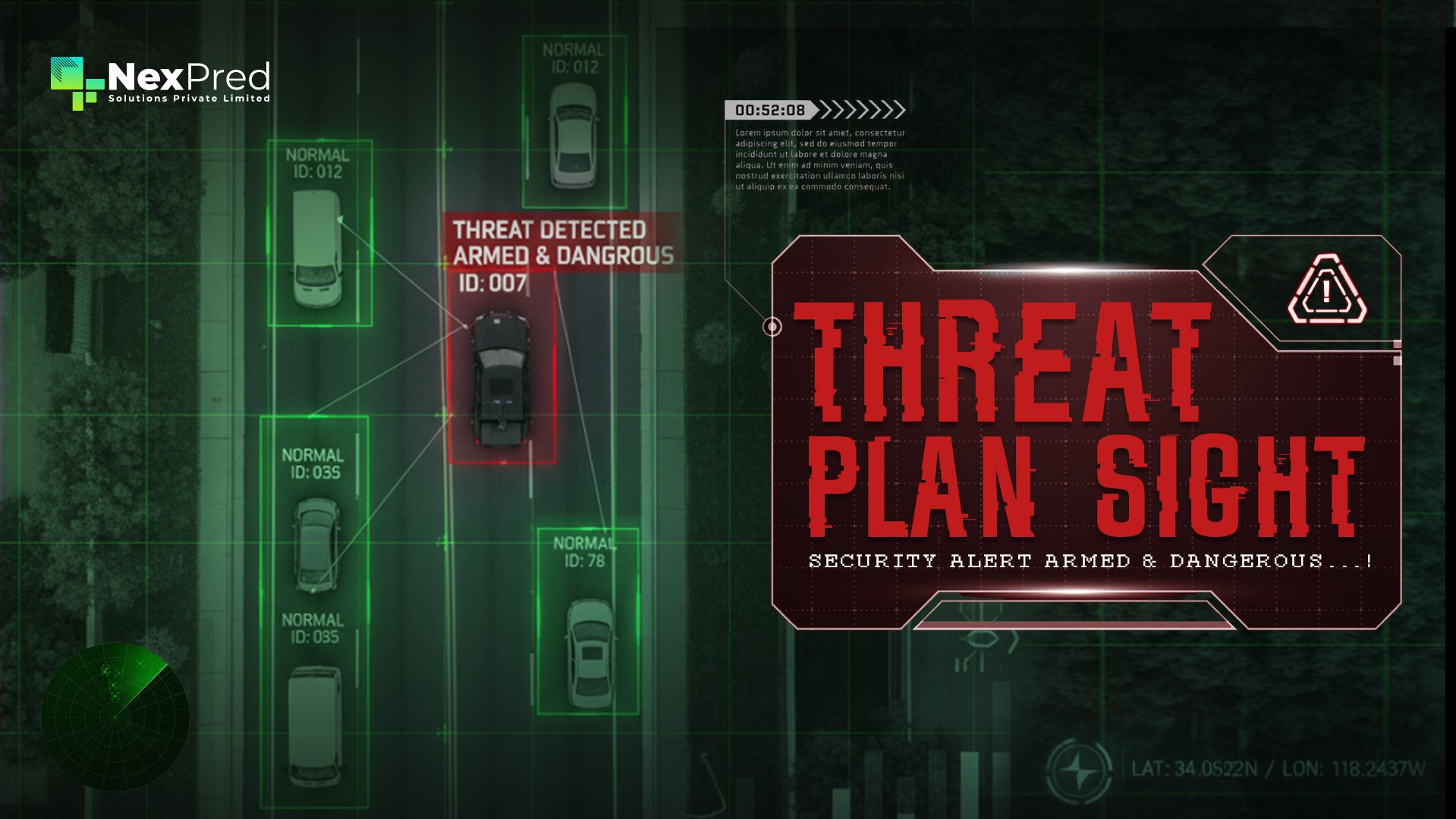
Spotting Danger in Plain Sight: How We Detect Armed Vehicles from Drone Footage
For border guards and security teams, that is the daily challenge. Watching hours of raw video is slow and risky. We set out to build a solution that helps operators spot and classify armed vehicles while the drone is still in the air.
The Problem We Needed to Solve
Traditional monitoring systems record video for later review. By the time someone checks it, the moment has already passed. In high-risk areas, that delay can be dangerous.
The challenges were clear:
- Video must be analyzed as it’s being captured, not hours later.
- The system has to run on lightweight embedded hardware small enough for a drone.
- It must work in real-world conditions like dust, glare, and shaky motion.
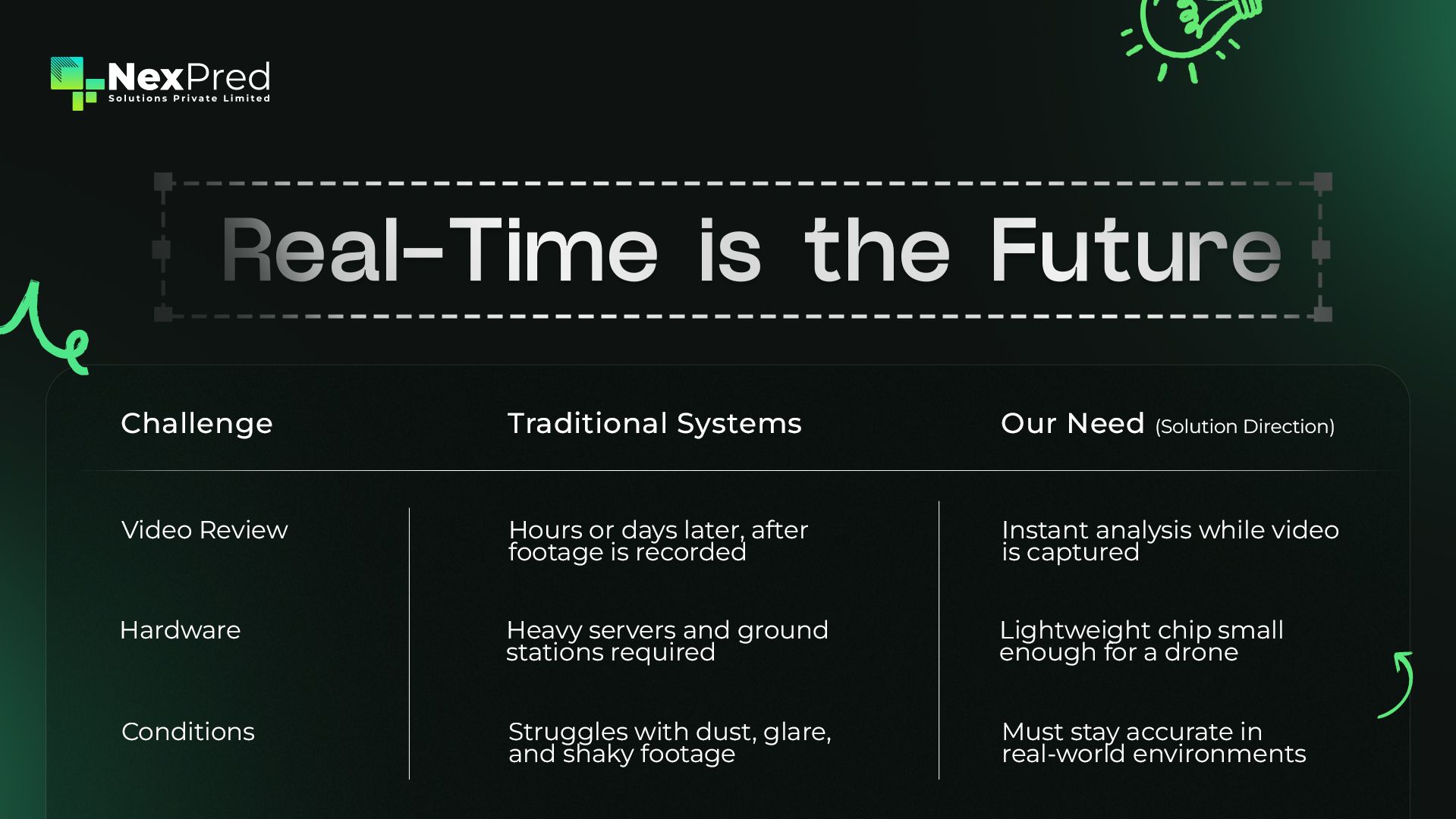
Our goal was simple: give teams a tool that could flag armed vehicles instantly so they could act on the spot.
Building Intelligence Into the Drone
Instead of sending all video back to a large server for processing, we moved the “thinking” directly onto the drone itself. It’s similar to shrinking a heavy desktop program so it can run smoothly on a smartphone. The drone’s camera captures live video, which is analyzed in real time by a detection model trained on thousands of real-world images. To make the system efficient, the model was compressed and optimized to run on lightweight hardware without losing accuracy. The processed video, complete with clear labels, is then streamed directly to the operator’s goggles or control screen.
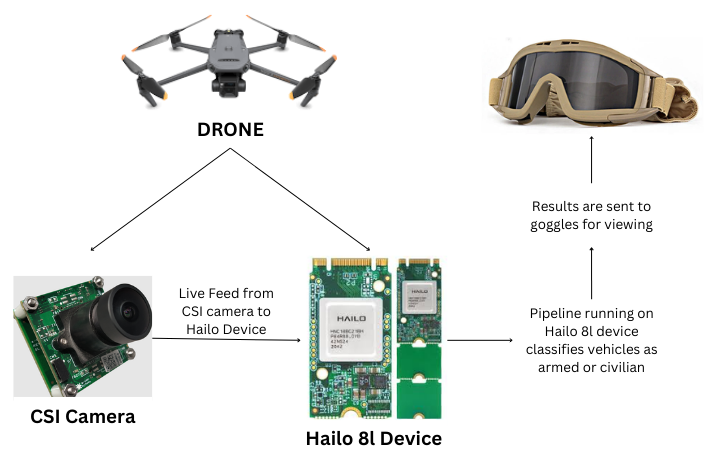
The result? Operators see only what matters, highlighted in real time.
Functionality: How the System Works in Real Time
To make this possible, we built a pipeline that runs directly on the drone:
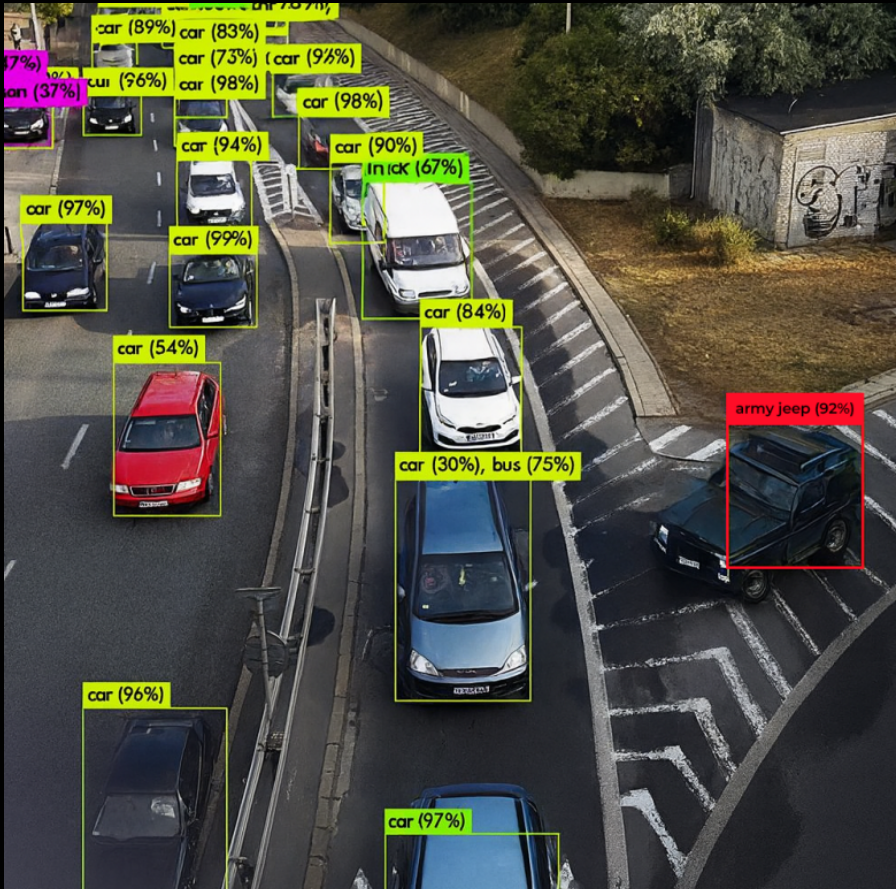
- Environment Setup
- CSI cameras capture the live view around border areas.
- The Hailo-8L device (tiny onboard chip) runs the detection pipeline.
- Both are mounted on the drone and connected together.
- Processing Workflow
- The live feed from the camera is passed into the Hailo SDK pipeline.
- A YOLO V8 model, trained on real-world armed and civilian vehicles, analyzes the video frame by frame.
- The model is quantized and optimized so it can run efficiently on Hailo hardware.
- Output is overlaid with bounding boxes (red for armed, green for civilian).
- Operator Output
- The processed video is streamed to goggles or a control screen.
- Instant alerts ensure operators can act immediately.
Inside the System
This is not just a demo; it’s a working system:
- On-drone analysis so video doesn’t have to be streamed back and forth.
- Clear overlays marking vehicles and tagging them as armed or civilian.
- Alerts reach the operator immediately, reducing reaction time.
By moving intelligence onto the drone, we eliminated delays and delivered insights exactly when operators needed them.
Proven in the Field
When tested in real conditions, the system delivered clear advantages. Operators received instant alerts rather than spending hours reviewing raw footage, and the detection stayed reliable even under dust, low light, and motion, situations that usually confuse cameras. Because the video was processed directly on the drone, it required far less bandwidth and reduced the risk of communication breakdowns.
In short, the result was faster detection, less manual work, and greater confidence for the people who rely on it.
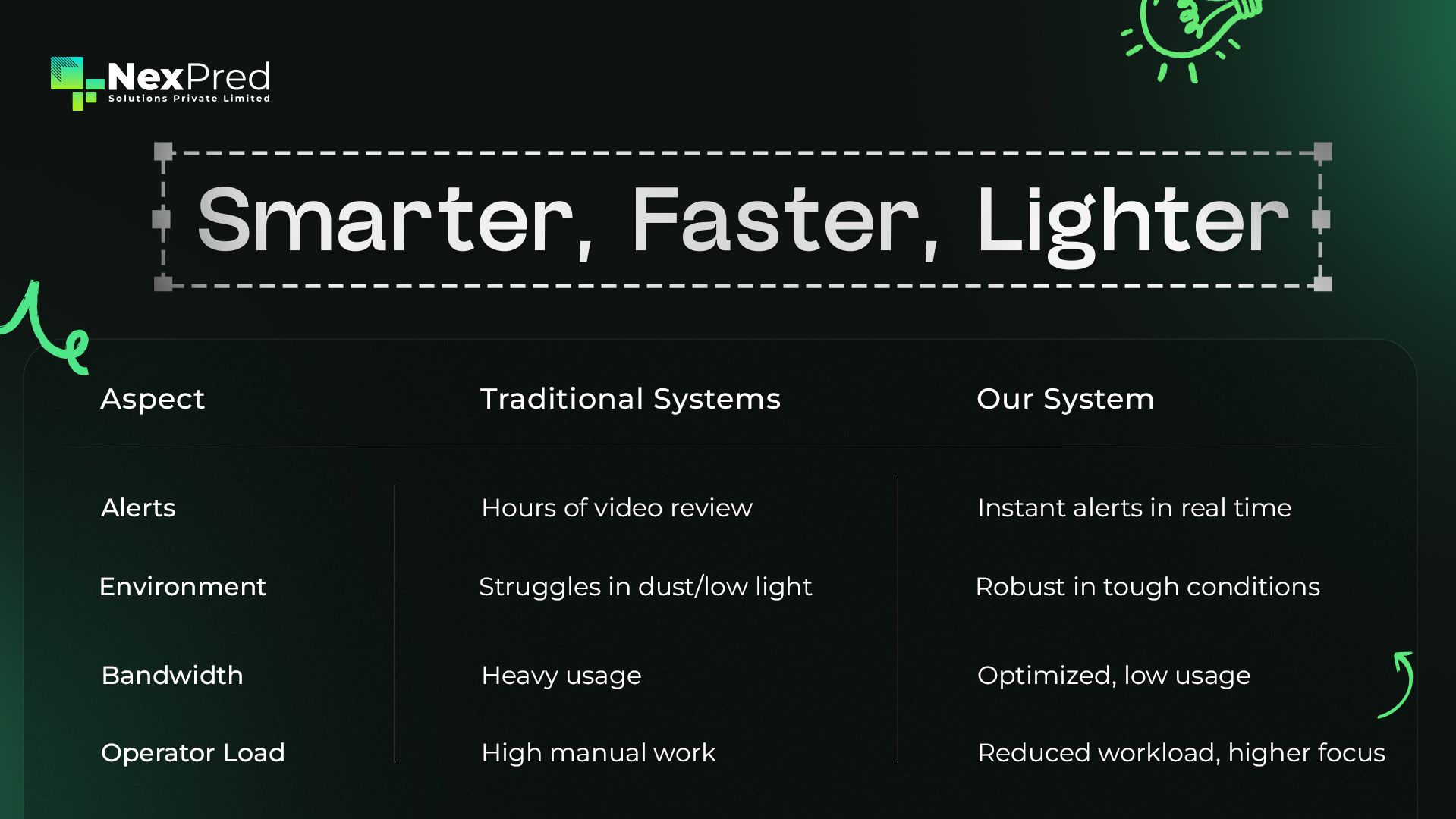
What Comes Next
We are already working on several improvements to make the system more powerful. Training data is being expanded to include a wider variety of vehicle types and terrains. Vehicle tracking is being added so that once identified, a vehicle can be followed across frames. We are also exploring additional sensors such as thermal and radar to maintain accuracy in challenging conditions like night or fog.
Finally, we are simplifying the integration process so the system can be plugged into different drone platforms more easily. Each of these steps brings us closer to a future where early detection becomes faster, more reliable, and accessible in the field.
Conclusion: The Impact Beyond the Tech
The future of security isn’t about adding more screens or more manual work. It’s about bringing intelligence closer to the action so teams can respond faster, with greater confidence.
By building detection directly into drones, we showed how the right mix of technology and design can turn a slow, reactive process into a real-time advantage.
At Nexpred Solutions, we are committed to creating systems that are not only innovative but also practical, helping teams protect what matters most without the complexity.
